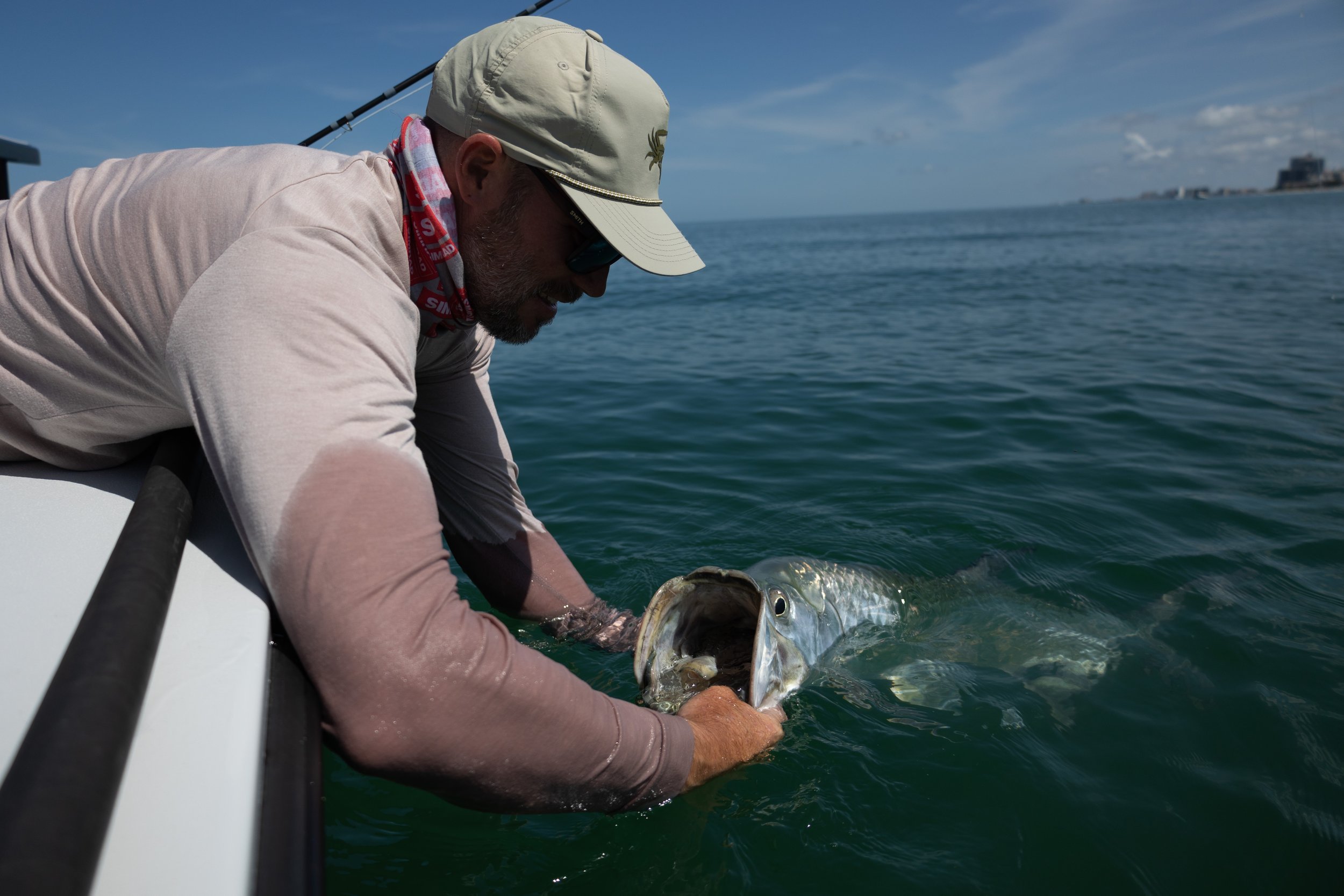The History, Evolution, & Conservation of Tampa Bay Tarpon Fishing
Tarpon fishing holds a storied place in Florida's angling history, especially in the Tampa Bay area. The "Silver King," as tarpon is affectionately known, has captivated anglers for over a century with its acrobatic leaps and formidable strength. This article delves into the rich history of tarpon fishing in Florida, the specific role Tampa Bay has played, and the ongoing conservation efforts aimed at preserving and restoring tarpon populations.
Early History of Tampa Bay Tarpon Fishing
The allure of tarpon fishing began in the late 19th century. The first recorded tarpon catch on rod and reel occurred in 1885 near Sanibel Island, marking the beginning of a sport that would grow rapidly in popularity. Wealthy anglers from the Northeast and Europe flocked to Florida, drawn by the promise of battling the majestic tarpon.
Tampa Bay: A Premier Tarpon Destination
Development as a Fishing Hub: By the early 20th century, Tampa Bay had established itself as a premier tarpon fishing destination. The bay's extensive estuary system, with its mix of deep channels and shallow flats, provides an ideal habitat for tarpon.
Notable Catches and Events:
The Boca Grande Pass: While not in Tampa Bay itself, the nearby Boca Grande Pass has long been recognized as the "Tarpon Capital of the World," significantly contributing to the region's fame.
Fishing Tournaments: Tampa Bay has hosted numerous tarpon fishing tournaments, further solidifying its reputation. These events attract anglers from around the globe and contribute to the local economy.
Evolution of Tarpon Fishing Techniques
Early Techniques: Initially, tarpon were targeted using live bait, with large, heavy tackle to handle their size and power. Anglers would fish from both shore and boats, often in deep channels where tarpon congregated.
Modern Fly Fishing: The development of fly fishing techniques for tarpon revolutionized the sport. Tampa Bay's shallow flats are perfect for sight fishing, where anglers can spot tarpon and cast directly to them. This method requires skill and precision, adding to the sport's allure.
Conservation Efforts and Challenges
As tarpon fishing grew in popularity, concerns about the sustainability of tarpon populations emerged. Overfishing, habitat loss, and environmental changes posed significant threats. Recognizing the need for conservation, various efforts and regulations were implemented.
Key Regulations:
Catch and Release: Modern regulations in Florida mandate that tarpon over 40 inches must be released. Anglers can purchase a tag to harvest one tarpon per year, primarily for record purposes.
Gear Restrictions: Specific gear restrictions, such as circle hooks for live bait fishing, help reduce mortality rates associated with catch and release.
Conservation Organizations and Initiatives:
Bonefish & Tarpon Trust (BTT): A leading non-profit organization dedicated to the conservation of tarpon and other sport fish. BTT conducts research, advocates for sustainable practices, and educates the public on the importance of conservation.
Programs and Research: BTT’s Tarpon Acoustic Tagging Project tracks tarpon movements to understand their migratory patterns and habitat use better.
Habitat Restoration: Efforts to restore and preserve essential habitats, such as mangroves and seagrasses, which are crucial for tarpon lifecycle stages.
Coastal Conservation Association (CCA): CCA Florida works to protect marine resources, including tarpon, through advocacy, education, and habitat restoration projects.
Habitat Enhancement Projects: CCA Florida’s initiatives include oyster reef restoration and mangrove planting, both vital for healthy estuarine ecosystems.
Local Efforts in Tampa Bay:
Tampa Bay Estuary Program (TBEP): TBEP focuses on restoring and protecting the bay’s water quality and habitats, which directly benefit tarpon populations.
Seagrass Recovery: TBEP has been instrumental in efforts to restore seagrass beds in Tampa Bay, which provide critical nursery habitats for juvenile tarpon.
Captains for Clean Water: This organization, founded by fishing guides, advocates for clean water and healthy estuaries in Florida.
Advocacy and Awareness: They work to raise awareness about the impacts of water mismanagement and advocate for policies that protect aquatic habitats.
The Future of Tarpon Fishing in Tampa Bay
The future of tarpon fishing in Tampa Bay looks promising, thanks to the combined efforts of conservation organizations, regulations, and the dedication of the fishing community. Sustainable fishing practices and habitat restoration are key to ensuring that future generations can enjoy the thrill of tarpon fishing.
Community Involvement: Anglers play a crucial role in conservation efforts. Practices such as proper catch and release techniques, participating in tagging programs, and supporting conservation organizations are vital.
Technological Advances: Advances in tracking and research technologies continue to provide valuable data, helping to shape effective conservation strategies.
Conclusion
Tarpon fishing in Tampa Bay has a rich history and remains a vital part of the region’s cultural and economic fabric. With continued conservation efforts and community involvement, Tampa Bay will remain a world-class destination for tarpon fishing, balancing the thrill of the sport with the necessity of preserving these magnificent fish for future generations.




